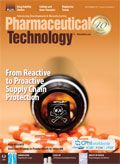Expediting the Discovery and Development of Drugs
Drug repurposing, repositioning, and rescue can be faster, cheaper, and target more diseases than traditional drug discovery approaches.
isak55/shutterstock.com

Although drug repurposing has been receiving growing attention in recent years, drug companies have taken this approach, at least serendipitously, for decades. Viagra, originally developed as an angina treatment, is one of the most well-known examples. Today many groups are focused on identifying new indications for existing drugs including academic researchers; nonprofits such as Cures Within Reach; and government institutions including the National Center for Advancing Translational Sciences in the United States and the UK Medical Research Council. Other drug repurposing research ventures include public-private partnerships like the Center for Drug Repurposing (operated jointly by Ariel University [Israel] and Drug Rediscovery Ltd) and the Drug Repurposing Hub (a collaboration between the Broad Institute Cancer Program, the Center for the Development of Therapeutics, and the Connectivity Map group); and companies such as Biovista, GVK Bio, and NuMedii. In 2012, it was estimated that drug repurposing, repositioning, and rescue (DRPx) efforts accounted for 30% of FDA-approved new drug products (1). In addition, in 2015, Biovista President and Co-founder Aris Persidis reported that these drugs accounted for approximately 25% of pharmaceutical industry revenues (2).
Known safety
The known safety of existing APIs is one of the biggest benefits of using them for new indications discovery, according to Gini Deshpande, founder and CEO of NuMedii, a drug-discovery company that applies its proprietary big data platform based on integrative genomics, network-based methods, large-scale machine learning, and chemoinformatics to improve efficacy. One application of NuMedii’s technology is to identify new indications for existing APIs. “Safety data for these APIs can be leveraged to expedite the development process via the 505(b) 2 approach in the United States or the hybrid approach in the European Union,” she explains.
For instance, a new chemical entity would normally take 10-15 years to get to the market, whereas an existing API being developed for a new indication can reach the market in five to eight years depending on the indication for which it is being developed. “This reduction in development time results in a significant cost and time savings for companies,” Deshpande says.
Success rates in Phase III trials are also much higher for products developed via 505(b) 2-type approaches compared to traditional approaches. Evaluating new indications for existing APIs can also expedite the discovery and development of new therapies for rare diseases and for other conditions where existing APIs can be used to validate novel biology and thus speed up the discovery process, according to Deshpande. She notes that there are approximately 2800 drugs and more than 4000 compounds that have been discontinued at Phase II development, so there is a rich pool of existing APIs with which to work.
Finding the needle in a haystack
One of the biggest challenges to repurposing of existing drugs is in finding that novel indication. NuMedii’s big-data, artificial intelligence (AI)-driven methods provide a distinct advantage with such an effort, according to Deshpande. “Because our technology uses both data- and knowledge-driven approaches to find the broadest possible landscape of new indications, we often identify out-of-the-box new indications for existing APIs that have previously been undiscovered,” she explains.
Ensuring market exclusivity and reimbursement level are two other key challenges with this approach. These issues are further compounded by geographic-specific issues, because rules differ in the EU, the US, and the rest of the world.
Four factors to consider
Four major factors need to be considered when looking for new indications for existing APIs, according to Desphande: scientific rationale, clinical viability, commercial viability, and regulatory path.
Scientific rationale involves ensuring that the biology being modulated by an existing API is relevant and assessing whether formulation or delivery for the new indication is feasible. Clinical viability relates to whether there is a specific unmet need being solved by the API, the fit within a treatment paradigm, and the risk/benefit equation for using an existing API for the new indication. Commercial viability factors include the nature of the competitive landscape, reimbursement issues, and target pricing. Questions regarding the regulatory path are focused around the type and amount of available existing data that can be used for approval, and what additional studies need to be conducted and at what cost for the various phases of development.
Numerous approaches
In the past, drug repurposing relied on serendipity, according to Deshpande. “Case reports of off-label uses and side effects of drugs reported (either approved or those in development) were often a good starting point to look for new indications/uses for these APIs,” she notes. Recent approaches have now made the process more systematic. She points to in-silico approaches that span a multitude of both computational biology approaches such as the one NuMedii uses and computational chemistry methods, screening approaches using both cell lines and animal models and literature-based searches, although the latter can have potential issues due to prior art with regards to intellectual property.
NuMedii began using genomic-data driven methods, but now leverages multiple types of ‘omic’ information, as well as information from the literature, clinical information, and other data types to ensure that the company captures the best possible indications for existing APIs, according to Deshpande.
“Since 2010, NuMedii has demonstrated that its discovery technology and machine learning algorithms can dramatically impact the time, cost, and success rate of drug development in the fields of inflammation and oncology, thus revolutionizing the drug discovery process as we know it,” she attests. “We have demonstrated the predictive capability of NuMedii’s technology in the areas of inflammation and oncology with many pharma partnerships and projects,” Deshpande adds. One such example is NM-001, an undisclosed cardiovascular drug that has been in use for more than 30 years. NuMedii’s software uncovered wide-spectrum anti-inflammatory activity that was validated in an ulcerative colitis animal model.
Still more data needed
Even with the successes being achieved with the information and approaches in use today, Deshpande believes that more data needs to be incorporated to ensure that the in-silico approaches become more predictive. Policy changes are also necessary, in addition to advancements in the technology to identify new indications for existing APIs, to ensure appropriate incentives are in place to speed the use of existing drugs for new indications. “For instance,” says Deshpande, “the [Orphan Product Extensions Now] OPEN Act--a key part of the 21st Century Cures Act before it was removed from that bill just before being signed into law in December 2016--would have provided an additional six months of market exclusivity to drugs that are repurposed and approved by FDA to treat rare diseases,” she observes.
Important avenue for discovery
There remains significant pressure on the pharmaceutical industry both from payers and patients to identify new therapies for diseases. “Given the total cost and time to develop new therapies from scratch, and the high failure rates involved, drug repurposing will provide an important avenue for the discovery of new treatments, particularly for rare diseases,” asserts Deshpande. She does not expect such an approach to completely replace traditional approaches, but rather supplement them.
“If one looks at developing countries like China and India, where the costs for new drug development will seem prohibitive, drug repurposing, repositioning, and rescue can rapidly create new treatments in these areas. That is precisely why we at NuMedii are proud to pioneer the use of big data and AI with systems biology to disrupt the traditional drug discovery paradigm and create a faster, highly predictive drug discovery engine to help more rapidly bring life-saving medicines to the people who need them most,” she states.
References
1. MJ Barratt and DE Frail, (Eds). Drug Repositioning: Bringing New Life to Shelved Assets and Existing Drugs (John Wiley & Sons, Hoboken, NJ, 2012).
2. A Persidis, “Myths and Realities of Repositioning,” Arrowhead 4th Annual Drug Repositioning, Repurposing & Rescue Conference (Chicago, IL, May 27-28, 2015).
Article Details
Pharmaceutical Technology
Volume 41, Number 9
September 2017
Pages: 24–25
Citation
When referring to this article, please cite it as C. Challener, “Expediting the Discovery and Development of Drugs," Pharmaceutical Technology 41 (9) 2017.

INTERPHEX 2025: Use of Walk-In Chambers for Bio/Pharma Development and Manufacturing
April 2nd 2025Sitting down with the PharmTech Group at INTERPHEX 2025, Christopher Murphy, director of Global Business Development and Service Customer Support at Environmental Specialties, discusses the design and critical role of walk-in chambers in the bio/pharmaceutical industry.
Drug Solutions Podcast: A Closer Look at mRNA in Oncology and Vaccines
April 30th 2024In this episode fo the Drug Solutions Podcast, etherna’s vice-president of Technology and Innovation, Stefaan De Koker, discusses the merits and challenges of using mRNA as the foundation for therapeutics in oncology as well as for vaccines.
Drug Solutions Podcast: Applying Appropriate Analytics to Drug Development
March 26th 2024In this episode of the Drug Solutions Podcast, Jan Bekker, Vice President of Business Development, Commercial and Technical Operations at BioCina, discusses the latest analytical tools and their applications in the drug development market.